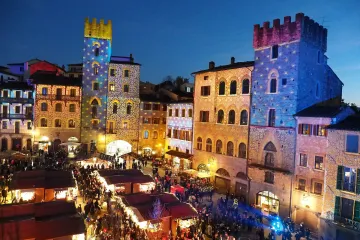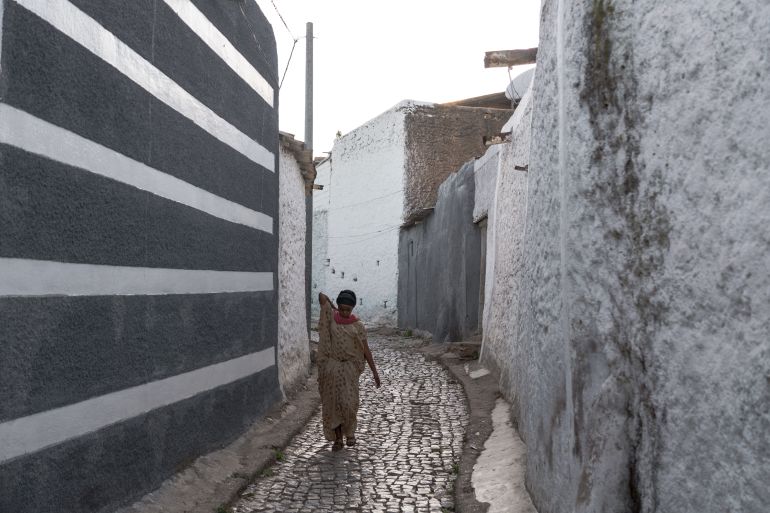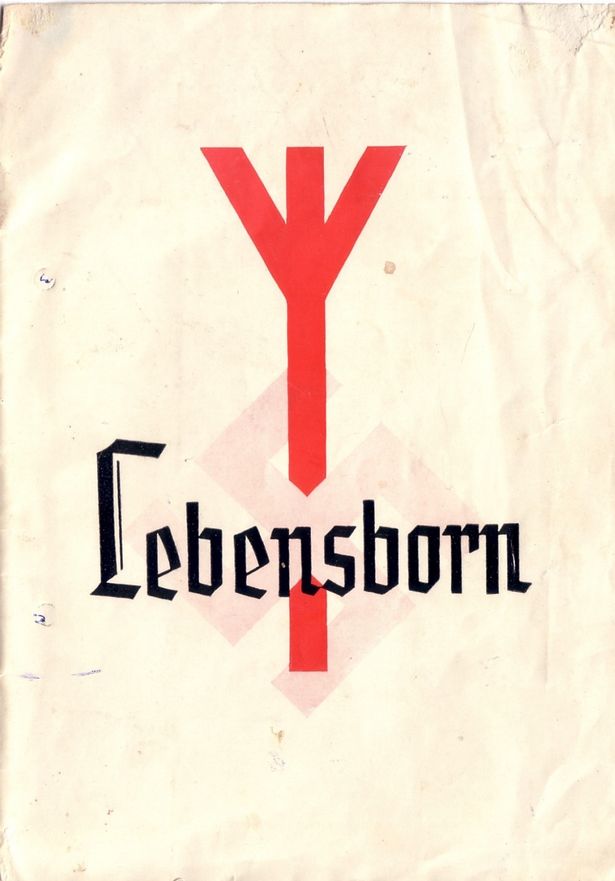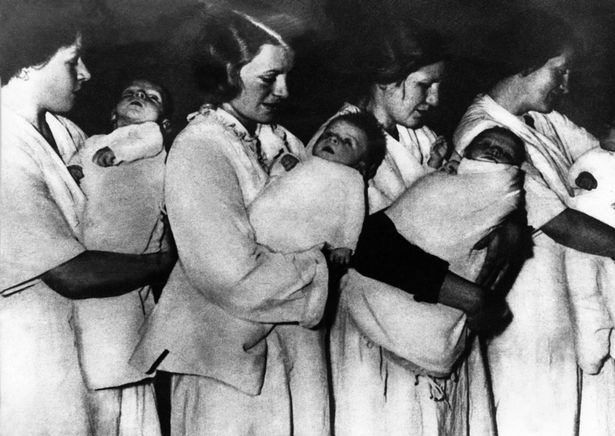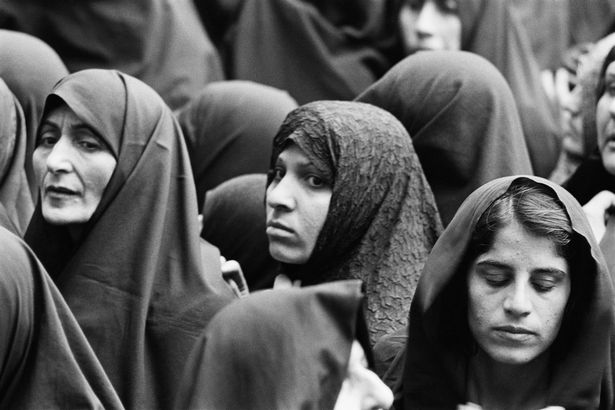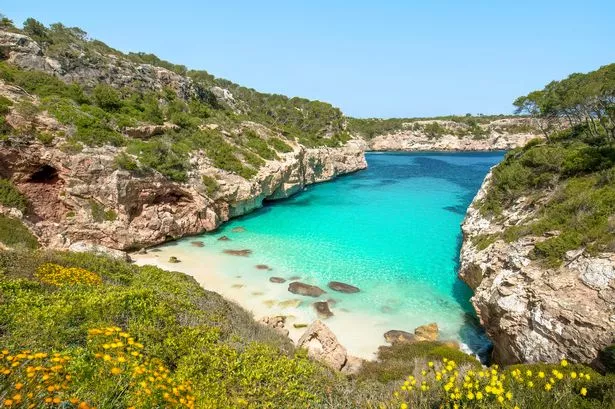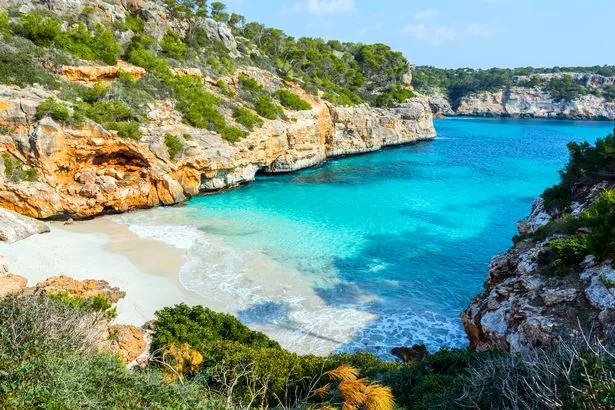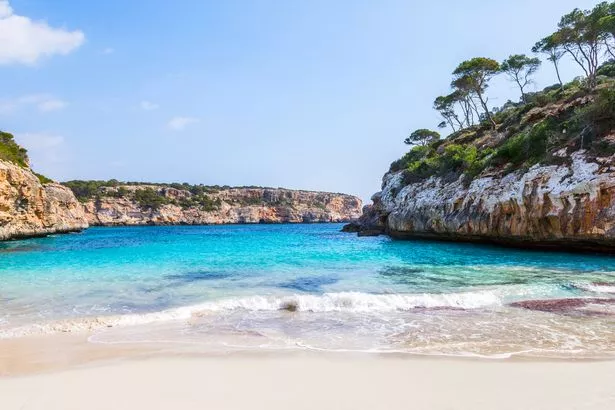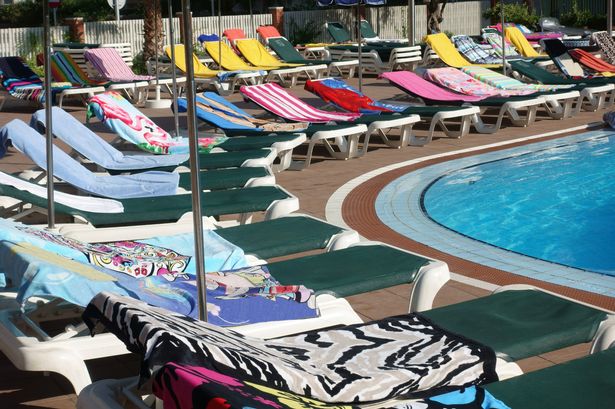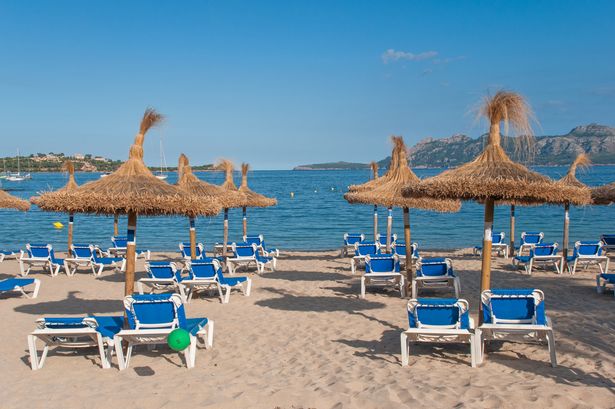
Easy trick to extend Tesco Clubcard vouchers as £xmillion due to expire within weeks
THOUSANDS of Tesco Clubcard holders have been warned they could lose out unused vouchers within weeks but there’s a clever trick that could stop you missing out.
Tesco shoppers have just until May 31 to use their existing Clubcard vouchers before they vanish for good.
In a direct message to customers, Tesco said: “Your Clubcard vouchers are expiring soon. Don’t forget to use them on your next shop.”
The supermarket giant is urging users to act fast, warning that once the deadline passes, expired vouchers cannot be reissued and many Brits could be sitting on tens or even hundreds of pounds in unused rewards.
Clubcard vouchers are only valid for two years from the date they’re issued, so anything earned back in mid-2022 will now be on the chopping block.
But there’s a little-known trick that can buy you another two years and all it takes is a quick tap at the till.
If a voucher is nearing its expiry date, you can simply spend a small amount, say 50p from a £10 voucher, and Tesco will reissue the remaining balance (£9.50) with a fresh two-year expiry date.
So instead of watching your points disappear into thin air, you can keep them going just by making a small spend in-store or online.
To find out what you’ve got left, simply log into your Tesco Clubcard account online or open the Tesco app and head to the ‘Vouchers’ section under the Clubcard tab.
If you’re shopping in-store, you can scan them straight from your phone, or if you’re buying online, they’ll appear automatically at checkout.
Tesco’s Customer Engagement Centre urged shoppers not to delay: “Lost track of where they are? Don’t worry, you can find your vouchers in the Tesco app.
“If you’re shopping in-store, just scan them at the till from your phone.”
What is Tesco Clubcard?
Tesco Clubcard is the supermarket’s free loyalty scheme, which allows customers to earn points every time they shop.
You get one point for every £1 spent, and when you reach 150 points, Tesco sends out a £1.50 voucher.
But the real value lies in Tesco’s Reward Partner scheme, where vouchers can be worth double or even triple depending on where you use them.
This includes popular family attractions, restaurants, and even travel services.
For example, turning £10 of Clubcard vouchers into a £30 reward is possible when using partners like PizzaExpress, Legoland, or RAC breakdown cover.
Make the most out of your Clubcard
You can also rack up points faster through Tesco’s partner brands with companies like Vauxhall, OVO Energy, and Evri offering extra points.
A new Vauxhall car could earn you up to 50,000 Clubcard points, while spending with Evri earns you one point per £1.
There’s also an easy way to top up your balance without shopping.
Sign up to Shopper Thoughts, Tesco’s survey platform, and you could bag 150 points just for sharing your opinions from home.
For regular Tesco customers, upgrading to Clubcard Plus might be a smart move.
It costs £7.99 a month, but gives you 10% off two in-store shops each month, which could quickly outweigh the monthly fee if you’re spending over £40.
You can also unlock exclusive Clubcard Prices, saving shoppers an average of £351 per year, according to Tesco.
Just remember, once you convert your Clubcard vouchers into Reward Partner codes, those only last six months, so be sure to use them in time.
With May 31 looming, time is ticking.
Check your Tesco app or account now and if you spot an old voucher, don’t bin it.
Use a few pence and give it a new lease of life.
After all, with a quick trick and a few taps, you could save a fortune on your next big shop or family day out.
How to save money on your supermarket shop
THERE are plenty of ways to save on your grocery shop.
You can look out for yellow or red stickers on products, which show when they’ve been reduced.
If the food is fresh, you’ll have to eat it quickly or freeze it for another time.
Making a list should also save you money, as you’ll be less likely to make any rash purchases when you get to the supermarket.
Going own brand can be one easy way to save hundreds of pounds a year on your food bills too.
This means ditching “finest” or “luxury” products and instead going for “own” or value” type of lines.
Plenty of supermarkets run wonky veg and fruit schemes where you can get cheap prices if they’re misshapen or imperfect.
For example, Lidl runs its Waste Not scheme, offering boxes of 5kg of fruit and vegetables for just £1.50.
If you’re on a low income and a parent, you may be able to get up to £442 a year in Healthy Start vouchers to use at the supermarket too.
Plus, many councils offer supermarket vouchers as part of the Household Support Fund.
NBA: Houston Rockets level play-offs series 3-3 against Golden State Warriors to set up game seven
Fred VanVleet scored 29 points as the Houston Rockets beat the Golden State Warriors 115-107 to level their NBA play-off first-round series at 3-3 and force a deciding game seven.
Experienced point guard VanVleet starred for the Rockets, adding eight assists and eight rebounds to his points haul, while Alperen Sengun recorded a double-double with 21 points and 14 rebounds.
The Warriors held a commanding 3-1 lead in the series but have twice failed to close it out, losing to the Rockets in game five on Wednesday and again in game six on Friday.
Rockets head coach Ime Udoka said of VanVleet: “He’s had some really good stretches lately.
“He knows what it is. He’s been a champion. Been there, done that. So I wouldn’t expect anything less than that from him.”
Warriors coach Steve Kerr added: “I thought we got some good looks against the zone but then, once they pulled away by 10 or 12, it was easier for them to run us off the line.”
The Rockets will host game seven on Sunday, with the winning team to face the Minnesota Timberwolves who clinched a 4-1 win against the Los Angeles Lakers.
Lebanon warns Hamas against using its territories to attack Israel

May 2 (UPI) — Lebanon‘s Higher Defence Council on Friday warned the Palestinian Islamic Resistance Movement, Hamas, against launching attacks or firing rockets into Israel from Lebanese territory, stating that strict measures will be taken to end any actions that violate the country’s sovereignty.
The warning by the country’s top military body came after the Lebanese Army arrested a number of Lebanese and Palestinians suspected of firing rockets into northern Israel on March 22 and March 28. The rocket attacks provoked additional Israeli retaliatory strikes.
While no group claimed responsibility for the rocket firing and Hezbollah denied any link, security reports indicated that three Hamas members were among those detained by the Army.
Major General Mohamad al Mustafa, the Secretary-General of the Higher Defense Council, said after a meeting attended by President Joseph Aoun and Prime Minister Nawaf Salam that Hamas was “warned against using Lebanese territories to carry out any action that harms Lebanon’s national security.”
“Maximum necessary measures will be taken to put a definitive end to any action that violates Lebanese sovereignty,” al Mustafa said, reading a statement.
He said that legal proceedings will commence early next week against all those detained and anyone who would be proven involved with last month’s rocket attacks will be prosecuted.
Aoun said during the meeting any attempt to “destabilize” the country, “involve it in wars” or “expose it to danger” will not be tolerated.
Salam emphasized the need for handing over “all illegal weapons” and preventing Hamas or any other factions to “destabilize security and national stability.”
Both leaders, who came to power last January, have remained firm on their pledges to disarm all militias and impose the state monopoly on weapons.
Hamas has carried out several attacks from southern Lebanon against Israel during the Gaza war that broke out in October 2023. Israel on its part killed a number of Hamas leaders based in Lebanon, including the deputy head of the group’s political bureau, Saleh al Arouri.
Lebanon has been trying to consolidate its authority and regain its long-lost sovereignty following Israel’s recent war that greatly weakened the once-powerful Iran-backed Hezbollah.
Mainly, 85% of Hezbollah’s positions and military facilities south of the Litani River in south Lebanon already are being taken by the Lebanese Army and its weapons confiscated in line with the Nov. 27 cease-fire agreement that was brokered by the United States and France to end the war with Israel.
The Army has also begun gradually taking control of some Palestinian positions outside the country’s 12 overcrowded refugee camps located in various regions.
Palestinian President Mahmoud Abbas is scheduled to visit Beirut on May 21 for talks with his Lebanese counterpart to discuss a mechanism for disarming Palestinian factions inside the camps and expanding Lebanon’s authority.
Rockets, VanVleet beat Warriors in Game 6, force playoff decider | Basketball News
Fred VanVleet scored 29 points as the Houston Rockets produce stunning 115-107 victory over the Golden State Warriors.
The Houston Rockets rode a crushing fourth quarter to a 115-107 victory over the Golden State Warriors on Friday to set up a game-seven showdown in their NBA Western Conference playoff series.
The Rockets will be trying to become just the 14th team to rally from 3-1 down to win an NBA playoff series when they host game seven on Sunday.
Fred VanVleet scored 29 points and Alperen Sengun added 21 points and 14 rebounds for the Rockets, who led most of the game and silenced an 18,000-strong crowd at the Warriors’ Chase Center arena with an explosive fourth quarter – putting together a 12-0 scoring run in the final frame to push their lead to as many as 17.
Amen Thompson added 14 points for Houston and veteran New Zealand big man Steven Adams added 17 points off the bench, connecting on four of four from the floor while providing a formidable defensive presence.

Adams had three of Houston’s five blocked shots as the Rockets kept the Warriors’ potent offence led by Stephen Curry in check.
Curry scored 29 points, but he connected on just nine of 23 shots from the field and coughed up five turnovers.
Jimmy Butler added 27 points but no other Warriors starter scored in double figures.
“Just make everything tough,” VanVleet said of the Rockets’ mindset as they took a two-point lead into the fourth quarter. “Obviously, we know what they bring to the table.
“You want to make everything tough, contest everything … I just think our youth and our athleticism can wear on them over the course of the game, and we’re able to have some success lately.”
Overwhelmed early in game five on Friday, the Warriors got off to a marginally better start, but in a nip-and-tuck first quarter that featured 10 lead changes they never led by more than two and Houston were up 25-21 at the end of the first period.
A Curry three-pointer tied it at 46-46 with 1:59 left in the first half, but again the Rockets pulled away to lead 53-48 after a first half in which the Warriors made 11 of their 17 turnovers.
“That’s the key to the whole series is our ball security,” said Warriors coach Steve Kerr.
Houston led 86-84 going into the fourth, but VanVleet drilled a three-pointer in the opening seconds, drawing a foul and making the free throw in a sign of what was to come.
“I thought the key play was a four-point play to start the (fourth) quarter,” Kerr said. “We didn’t guard VanVleet, they threw it up the floor and he knocks it down and gets the free throw, and it felt like a game-changing play.”
Draymond Green added: “We can’t give up a four-point play in a two-point game.”
Kerr also singled out 31-year-old Adams, whose 31 minutes on the floor were his season-high.
“Adams was fantastic tonight,” Kerr said. “They controlled the game while he was out there.”
The Warriors resorted to fouling Adams, a low-percentage free-throw shooter, but he made nine of 16 foul shots and the Rockets managed to grab the rebounds of a couple of his misses to score anyway.
The winners of the series will take on the Minnesota Timberwolves, who ousted the Los Angeles Lakers in five games.
Liz Hurley, 59, looks incredible in a red bikini as she takes to the beach after finding love with Billy Ray Cyrus
ELIZABETH Hurley glowed in a series of photos from her recent trips to the Maldives.
The actress, 59, posted her holiday photo dump to Instagram where she looked stunning in a barely-there red bikini just weeks after revealing her new love.
Liz posed beachside in the sexy swimsuit and smiled happily as she raised her hands up in the air.
Another photo showed her walking away from the camera, with her unbelievable figure on full display.
The series of pics included Liz looking over her shoulder in a backless, floral maxi dress, a sashimi dinner, an opulent bath, and a shot of her luxury, beachfront accommodation.
“Well…it’s been a helluva few weeks since my glorious sojourn in the Maldives, but here are some of my happy memories,” she captioned the pics.
The holiday snaps come just a couple of weeks after Liz revealed her romance with country music singer, Billy Ray Cyrus, 63.
They went public with their relationship on Easter Sunday, with fans going into meltdown.
It came after Liz shared a photo on Instagram of Billy kissing her.
Alongside the picture, she simply wrote, “Happy Easter”, followed by a heart emoji.
Showing his support for the romance, her son Damian commented with party and heart emojis.
The new couple first met in 2022 playing the romantic leads in the holiday movie, Christmas In Paradise.
However, Billy revealed they didn’t reconnect until his marriage to third wife Firerose came to an end, and Liz reached out to see if he was ok, marking the first move in the romance.
Speaking on Apple Music Country’s The Ty Bentli Show, he revealed how they chatted and had “instant chemistry”.
“She’s so impressively brilliant,” the smitten singer said.
“If you can laugh together, you can make it through everything.”
Friday’s high school baseball and softball scores
FRIDAY’S RESULTS
BASEBALL
City Section
Banning 7, Narbonne 2
Carson 12, Roosevelt 1
Cleveland 7, Taft 2
Contreras 8, Roybal 6
Eagle Rock 13, Lincoln 3
East Valley 13, Northridge Academy 2
El Camino Real 2, Chatsworth 1
Franklin 9, Bravo 1
Granada Hills 5, Birmingham 1
Lakeview Charter 14, Valley Oaks CES 9
Los Angeles 13, Diego Rivera 3
Los Angeles 14, Diego Rivera 0
LA Leadership 9, CALS Early College 6
LACES 12, Hamilton 5
Marshall 6, Wilson 0
Mendez 14, Hollywood 1
Middle College 6, Animo Venice 0
Monroe 7, VAAS 2
Rancho Dominguez 14, Gardena 2
Santee 18, Angelou 10
SOCES 17, Reseda 7
University 12, Westchester 0
Van Nuys 5, Grant 2
Vaughn 8, Chavez 1
Venice 17, Fairfax 9
WISH Academy 11, Animo Robinson 1
Southern Section
AAE 13, Silver Valley 0
ACE 10, CIMSA 2
Adelanto 5, Victor Valley 4
Aliso Niguel 10, Tesoro 2
Aquinas 12, Linfield Christian 2
Arcadia 6, Crescenta Valley 4
Arroyo 2, Marshall 0
Artesia 5, Glenn 4
Barstow 15, Silverado 7
Beverly Hills 22, Inglewood 1
Bishop Alemany 5, Chaminade 1
Buena Park 2, Segerstrom 1
Burbank Burroughs 7, Burbank 1
California 7, Whittier 3
Capistrano Valley Christian 7, OC Pacifica Christian 3
Carpinteria 5, Nordhoff 1
Chino 14, Ontario 7
Claremont 6, Diamond Bar 0
Cornerstone Christian 3, Liberty 2
Costa Mesa 5, Katella 2
Crespi 7, Harvard-Westlake 6
Don Lugo 10, Chaffey 2
Downey 9, Warren 0
Downey Calvary Chapel 15, Fairmont Prep 4
Eisenhower 11, Colton 3
El Dorado 5, El Modena 4
El Rancho 4, Santa Fe 2
El Segundo 7, Peninsula 1
Elsinore 10, West Valley 0
Etiwanda 3, Upland 2
Flintridge Prep 4, Pasadena Poly 1
Fontana 5, Arroyo Valley 1
Foothill Tech 18, Bishop Diego 1
Fountain Valley 4, Los Alamitos 1
Fullerton 7, Laguna Hills 1
Garden Grove 13, Westminster 1
Garden Grove Pacifica 7, Yorba Linda 0
Gahr 13, Bellflower 3
Glendale 10, Hoover 2
Grand Terrace 5, Rialto 1
Great Oak 13, Temecula Valley 5
Hart 11, Canyon Country Canyon 4
Heritage Christian 1, Whittier Christian 0
Highland 9, Palmdale 2
Hueneme 5, Fillmore 3
Huntington Beach 14, Edison 3
Jurupa Hills 14, Carter 2
Keppel 16, San Gabriel 1
Knight 10, Eastside 1
La Canada 6, Village Christian 5
La Habra 13, Crean Lutheran 0
Lancaster 16, Antelope Valley 1
Laguna Beach 7, University 0
Lakewood 6, Long Beach Cabrillo 0
La Quinta 8, Xavier Prep 4
Long Beach Wilson 19, Long Beach Jordan 0
Los Altos 7, Alta Loma 6
Los Osos 8, Damien 3
Lucerne Valley 11, Victor Valley Christian 6
Mater Dei 6, Orange Lutheran 4
Mayfair 13, Dominguez 2
Mira Costa 4, Redondo Union 1
Mission Viejo 3, San Juan. Hills 1
Montclair 13, Diamond Ranch 6
Montebello 9, Alhambra 2
Mountain View 6, El Monte 0
Murrieta Valley 6, Chaparral 1
Newport Harbor 10, Marina 4
New Roads 11, Lennox Academy 0
Nogales 13, Morningside 0
Norwalk 8, Firebaugh 0
Oak Park 10, de Toledo 0
Oaks Christian 9, Newbury Park 2
Orange 8, Savanna 5
Orange Vista 9, Rancho Verde 0
Oxford Academy 15, Cerritos 10
Palm Desert 14, Palm Springs 1
Paloma Valley 5, Lakeside 3
Pioneer 13, Whitney 1
Placentia Valencia 12, Godinez 1
Quartz Hill 7, Littlerock 1
Rancho Alamitos 10, Western 2
Rancho Cucamonga 6, Chino Hills 3
Rancho Mirage 6, Shadow Hills 4
Rio Hondo Prep 5, Providence 1
Rio Mesa 2, Oxnard 0
Royal 10, Camarillo 1
Saddleback 9, Magnolia 8
Sage Hill 6, Northwood 5
San Clemente 4, El Toro 3
San Jacinto Valley Academy 12, Nuview Bridge 4
San Marcos 4, Buena 3
Santa Barbara 3, Oxnard Pacifica 0
Santa Margarita 4, Servite 3
Santa Paula 4, Malibu 0
Santa Rosa Academy 17, Hamilton 1
Saugus 3, Castaic 1
Schurr 10, Bell Gardens 6
Sherman Oaks Notre Dame 8, Loyola 6
Sierra Canyon 4, St. Francis 0
Simi Valley 5, Moorpark 2
SLOCA 15, Shandon 3
South El Monte 6, Rosemead 0
South Hills 5, Colony 1
South Torrance 13, North Torrance 3
St. Anthony 13, Verbum Dei 0
St. John Bosco 2, JSerra 0
St. Monica 13, St. Bernard 7
St. Pius X-St. Matthias Academy 16, St. Genevieve 3
Sunny Hills 9, Esperanza 3
Temecula Prep 25, California Military 0
Temescal Canyon 3, Tahquitz 1
Thousand Oaks 10, Calabasas 9
Torrance 11, West Torrance 3
Trabuco Hills 18, Capistrano Valley 8
Troy 4, Sonora 2
Tustin 2, Santa Ana Calvary Chapel 1
Valley Christian 2, Maranatha 0
Valley Christian Academy 7, Coastal Christian 6
Ventura 6, Dos Pueblos 0
Villa Park 11, Santa Ana Foothill 2
Vista Murrieta 8, Murrieta Mesa 2
Western Christian 15, Webb 2
Westlake 5, Agoura 2
West Ranch 23, Golden Valley 0
Woodbridge 4, Portola 3
SOFTBALL
City Section
Alliance Bloomfield 17, Washington 16
Birmingham 7, Taft 0
Bravo 14, Lincoln 0
Chavez 4, Verdugo Hills 2
El Camino Real 17, Chatsworth 1
Garfield 18, Bell 0
Granada Hills 16, Cleveland 2
Jefferson 11, Angelou 11
Kennedy 12, Poly 7
Legacy 13, Huntington Park 0
Marquez 27, Torres 5
Maywood Academy 17, Maywood CES 2
Middle College 27, Anime Watts 17
San Fernando 6, Arleta 5
Santee 20, West Adams 10
Sotomayor 22, Elizabeth 5
Sylmar 18, Grant 0
Wilson 17, Franklin 12
Southern Section
Adelanto 9, Victor Valley 5
Alta Loma 4, South Hills 3
Arlington 14, Heritage 9
Arroyo 18, Marshall 2
Artesia 17, Glenn 5
Bloomington 4, San Gorgonio 3
Brentwood 15, Lennox Academy 10
Buena Park 9, Katella 1
Cerritos 20, Oxford Academy 0
Chaffey 12, Don Lugo 7
Colton 7, Arrowhead Christian 0
Cypress 8, El Modena 0
Dana Hills 2, Aliso Niguel 0
Diamond Ranch 11, Montclair 0
Dos Pueblos 3, Ventura 2
Downey 17, Lakewood 6
El Monte 8, Mountain View 5
El Segundo 4, South Torrance 3
Elsinore 4, Tahquitz 3
Etiwanda 11, Rancho Cucamonga 2
Fontana 17, Rim of the World 16
Foothill Tech 14, Calabasas 9
Fullerton 6, Segerstrom 0
Garden Grove Santiago 15, Los Amigos 0
Hamilton 7, Santa Rosa Academy 6
Heritage Christian 15, Maranatha 4
Hesperia Christian 9, ACE 7
Irvine 18, Portola 0
JSerra 5, Mater Dei 2
Kaiser 12, Jurupa Hills 9
Lakeside 9, San Jacinto 3
Lakewood St. Joseph 24, Valley Christian 12
La Palma Kennedy 11, Garden Grove 1
La Salle 6, Sacred Heart of Jesus 0
Los Altos 12, San Dimas 2
Monrovia 20, San Marino 11
Murrieta Mesa 11, Great Oak 10
Murrieta Valley 15, Temecula Valley 0
North Torrance 11, Mira Costa 1
Orange 5, Loara 4
Orange Vista 9, Rancho Verde 3
Pasadena Poly 16, Westridge 4
Peninsula 2, Redondo Union 1
Pioneer 6, Whitney 5
Placentia Valencia 14, Laguna Hills 2
Providence 13, Flintridge Prep 10
Rancho Alamitos 20, Bolsa Grande 6
Riverside King 6, Ramona 1
Rio Mesa 5, Oxnard 2
Saddleback 22, Century 12
San Jacinto Valley Academy 17, Nuview Bridge 8
Santa Ana Valley 13, Westminster La Quinta 3
San Marcos 10, Buena 4
Santa Margarita 4, Orange Lutheran 2
Santa Monica 2, Viewpoint 1
Santa Paula 10, Fillmore 0
Shadow Hills 23, Rancho Mirage 6
Silverado 15, Barstow 10
Simi Valley 7, Royal 3
South El Monte 21, Rosemead 1
Temecula Prep 20, California Military 11
Temescal Canyon 11, West Valley 0
University 23, Estancia 0
Upland 8, Los Osos 0
Westminster 10, Tustin 2
West Ranch 10, Vasquez 6
Costa Mesa 11, Godinez 2
Crowd crush at temple in India’s Goa kills 6, injures dozens | Religion News
Tens of thousands of devotees throng narrow lanes leading to a Hindu temple in the coastal state, causing the deadly crush.
At least six people have been killed and about 80 others were injured in a crowd crush at a temple in the western Indian state of Goa where tens of thousands of Hindu worshippers had assembled, officials said.
The incident happened on Friday night as thousands of devotees thronged narrow lanes leading to the Hindu temple in Goa’s Shirgao village, some 40km (24 miles) from the state capital of Panaji.
People had gathered during the annual Shri Lairai Zatra festival at the Sree Lairai Devi temple, which is popular for events including firewalking rituals, during which devotees walk barefoot over a bed of burning coals to seek blessings.
According to a report by the Press Trust of India news agency, people standing on a slope near the temple fell over, pushing more people to fall onto each other, Director General of Police Alok Kumar said.
Goa Chief Minister Pramod Sawant said in a statement that he was “deeply saddened by the tragic stampede”. He visited the hospital and said that “all possible support” would be given to the families of those killed or injured.
Vishwajit Rane, Goa state’s health minister, said “approximately 80” people were injured. “Five are critical and on ventilator support, while the remaining are being treated in the specially created emergency ward,” he said.
Prime Minister Narendra Modi’s office expressed “condolences to those who lost their loved ones”. “The local administration is assisting those affected,” Modi said on social media.
Deadly crushes occur regularly at religious festivals across India, where large crowds often gather in small areas.
In January, at least 30 people were killed and many more were injured as tens of thousands of Hindus rushed to bathe in a sacred river at India’s massive Maha Kumbh festival, the world’s largest religious gathering, in the northern Uttar Pradesh state.
In July last year, at least 116 people died, most of them women and children, when a crowd of thousands at a religious gathering in northern India surged at a tent camp in Hathras town in the same state.
Another 18 people, mostly women and children, were killed in a crowd crush at a train station in India’s capital New Delhi in February.
The Ethiopian bookbinder connecting a city’s people with its forgotten past | Arts and Culture
Harar, Ethiopia – When Abdallah Ali Sherif was growing up in eastern Ethiopia, his parents never spoke about the history of his city.
“When I asked my parents about our history, they told me we didn’t have one,” the kind-faced 75-year-old recalls as he reclines on a thin mattress on the floor of his home in Harar’s old walled city. Shelves of dusty cassettes line the walls and old newspapers lie scattered about the floor.
The father of five and grandfather of 17 pauses to pluck some khat leaves to chew as he explains: “Our parents were afraid to teach us about our culture or our history.”

‘Peeking through a window’
For centuries, Harar, with its colourful clay houses and narrow cobblestone streets, was a centre of Islamic scholarship and home to a thriving manuscript culture producing Qurans, legal texts and prayer books in Arabic and Ajami, a modified Arabic script used to write Indigenous African languages.
Nestled atop a plateau that overlooks deserts and savannas linking the coastal lowlands and central highlands of Ethiopia and Somalia, in the 16th century, Harar became the capital of the Adal Sultanate, which at its height controlled large parts of modern-day Somalia, Ethiopia, Djibouti, and Eritrea.
Governed by powerful Muslim rulers, it was situated along trade routes that traversed the Red Sea to connect the Horn of Africa to the Arabian Peninsula and beyond.
Then, in 1887, Harar’s military was defeated by the forces of Menelik II, and the city was forcefully absorbed into a Christian empire.
The following decades were shaped by state repression, social discrimination and the erosion of the city’s Islamic culture and institutions.
Arabic street signs were replaced with Amharic ones, Harar’s largest mosque was turned into an Ethiopian Orthodox Church and numerous Islamic educational centres were demolished. Severe restrictions were placed on religious practices and education – once a central part of Harar’s identity.
It was against this backdrop that Sherif grew up.
“We learned from a young age that if we expressed our culture or talked openly about our history, then we could end up in the prisons,” he explains, smacking his wrists together to mimic handcuffs.

Then, in 1991, ethnic federalism, which organised and defined federated regional states by ethnicity, was implemented throughout the country, allowing newfound religious and cultural freedom. The Harari people now belonged to the Harari region, with Harar as its capital.
Ever since, Sherif has been on a mission: To explore his city’s cultural identity by collecting artefacts, from old music cassettes to minted coins and, most importantly, manuscripts.
After years of painstaking searches going from household to household, he collected enough items to open Ethiopia’s first private museum, Abdallah Sherif Museum, 14 years ago in the hope of reconnecting Harar’s people with their history. The collection of hundreds of old manuscripts has become a particular passion.
“Each book I find, it feels like I am peeking through a window into a beautiful and rich culture that was almost forgotten,” he says.
To preserve these manuscripts, Sherif has also revitalised the ancient tradition of bookbinding. By tracing the last Hararis with knowledge of this art form, he has brought a once-extinct practice back to life.

A city of manuscripts
The production of manuscripts – as a way of sharing and safeguarding religious knowledge – was an important aspect of Harar’s culture, says Nuraddin Aman, an assistant professor of philology at Addis Ababa University.
Manuscript making is believed to have emerged in the city in the 13th century, when an Islamic scholar, known colloquially as Sheikh Abadir, is said to have come from what is today Saudi Arabia and settled in the area with about 400 followers.
According to Sana Mirza, a researcher at the Institute of Fine Arts at New York University who specialises in Islamic art, Harari scripts were influenced by Indian Gujarati, Yemeni, and Egyptian Mamluki styles.
“The Indo-African relationship was very deep,” explains Ahmed Zekaria, an expert in Islamic and Harari history. “There was a strong linkage between India and Africa for centuries before the British arrived.”
Some Qurans found in Harar use a unique cursive calligraphic script said to have been developed in India’s northern Bihar region at about the 14th century and rarely seen outside India.
Manuscript makers developed their own style that merged local creativity and outside influences.
Within families, manuscripts were considered sacred heirlooms passed down through generations. Each Harari house had at least two or three manuscripts – often, the Quran, Hadiths, or other religious texts – Zekaria says.
According to Aman, the structured production of manuscripts made the city unique. Artisans were required to get permission from a local Islamic scholar – someone descended from Sheikh Abadir or one of his followers – to produce each religious manuscript. Then, before circulation, they needed approval from the incumbent emir. Still, full-time scribes were rare. “Most of them were farmers and produced manuscripts in their free time,” says Zekaria.
Harar also grew into a centre for bookbinding with artisans making leather covers to protect manuscripts, and people travelling to the city to learn the craft.

When Harar was absorbed into the Ethiopian empire, education centres, once responsible for manuscript production, were shut down or destroyed. Without new manuscripts, bookbinding disappeared. Meanwhile, madrasas (religious schools) were shuttered, and children were forced to attend government schools teaching only Amharic.
Sherif was born into a middle-class Muslim family in 1950. He grew up during the reign of Emperor Haile Selassie, who ruled Ethiopia from 1930 to 1974 and under whom repression of Muslims escalated.
In the 1940s, Harari elites united with their Somali neighbours inside Ethiopia to organise a rebellion, advocating for Harar to join Somalia. When Selassie caught wind of this, he deployed thousands of soldiers into Harar. Mass arrests followed, leading to dozens of Hararis being imprisoned for years without charge or trial. Selassie’s forces confiscated the properties and belongings – including cherished manuscripts – of residents believed to be rebellion supporters. An estimated 10,000 Hararis fled to other Ethiopian cities or Somalia and Middle Eastern countries.
While Sherif says he grew up knowing he was Harari, he did not know what that meant outside of being Muslim and speaking the Harari language. Fearing state repression, Harari families were forced to hide their histories from their children. But as a teenager, Sherif could no longer suppress his curiosity about his identity.
In high school, he remembers asking his teacher if the city ever had Muslim leaders.
“The teacher responded that we had no leaders outside the Ethiopian Christian ones. After this, the other [Christian] students began teasing me about not having a history,” he recounts.
“I was taught that Haile Selassie was our king, and there was one country, one history, one language, and one culture,” he continues.
“Our community was too afraid of the state to challenge this or to teach us about our real history. They feared we would become angry over it and fight against the state.”
In 1974, when Sherif was in his 20s, the Derg, a Marxist-Leninist military group, overthrew Selassie.
The group brutally suppressed any opposition. Half a million Ethiopians were killed and thousands were crippled as a result of torture.
When the 1977-1978 Ogaden War broke out, with Somalia attempting to annex Ethiopia’s Ogaden region that is inhabited by ethnic Somalis, the Derg accused Hararis of collaborating and carried out massacres of civilians in Harari neighbourhoods of Addis Ababa.
In their region, Hararis were still the land-owning class, and many were completely dispossessed of their livelihoods as the Derg sought to eradicate private land ownership. Harari youth – like young men from all communities – were forcibly conscripted into the army. When an anti-Derg resistance movement emerged in Harar, the repression increased, while more Hararis moved abroad to escape it.
Today, Hararis are a minority in their region, with more living abroad than in Harari.

‘Missing pieces of myself’
Like many Harari families, when Sherif graduated from high school, his parents began educating him on who he really was.
He was bewildered to discover that what he’d been taught in school was a lie. “My whole life, I have suffered from a severe identity crisis,” says Sherif, sighing loudly and tossing a leafless khat stalk to the side. “I have always felt like there were pieces of myself that were missing – and I couldn’t feel peace until I found them.”
After high school, Sherif began a science degree in Addis Ababa, but dropped out within a year when he found out the woman he loved, who was his then-girlfriend, was being forced by her family to marry another man in Harar. “There was nothing in my life more important to me than her,” he says, with a wide, bashful smile. He returned home to marry this woman, Saeda Towfiqe – today his most enthusiastic supporter – and began working in the family business.
It wasn’t until 1991, when the Ethiopian People’s Revolutionary Democratic Front (EPRDF), led by the Tigray People’s Liberation Front (TPLF), overthrew the Derg and implemented a system of ethnic federalism designed to promote minority ethnic and religious rights, that Hararis, along with various other groups, suddenly found themselves with the freedom to develop and express their cultures and histories.
“I became mad to understand my history,” explains Sherif, the tone of his speech rising sharply as he smacks his head. “I really became mad.”
Taking advantage of this opening, Sherif began collecting hundreds of old cassettes of traditional Harari music. But he quickly realised that the history he sought existed in the old manuscripts still owned by many families in Harar. Through these religious and legal manuscripts, Sherif was able to glimpse the rich intellectual life of his ancestors.
“Each manuscript I found added a missing piece to a puzzle,” he explains.

Over centuries, families had developed a practice of conserving and transmitting manuscripts to the next generation, Aman explains.
Manuscripts were inherited or given at significant life events, such as weddings, the birth of a child, or during religious ceremonies. Scholars and religious leaders also gave them to students as a token of appreciation, “thereby fostering an environment of knowledge sharing and manuscript mobility”, says Aman.
People kept the manuscripts wrapped in cloth and would only uncover them on special occasions.
At first, Sherif, who was 40 when he began his project, purchased the manuscripts. “Eventually, when the community saw the importance of what I was doing for our heritage, they started donating manuscripts and other artefacts to me.”
But Sherif found that the covers and bindings of many manuscripts he acquired were in disarray.
The last bookbinder in Harar was Kabir Ali Sheikh, a local Quran teacher who learned the craft from elders and kept the tradition alive until his death in 1993. The ancient art of Harari bookbinding died with him. But Sherif was able to learn the traditional process from a few of Ali’s former students. He also went to train in Addis Ababa and Morocco.
“If you don’t bind the books, then you will lose them,” Sherif says. “Collecting manuscripts is useless if you do not also work on their restoration and preservation. If you lose just one page, you can lose the whole book. Beautiful things need to be protected and covered.”
It took Sherif two years of practice to perfect the art. He is now considered one of the best bookbinders in Africa, Zekaria says.
Sherif has strictly adhered to the traditional Harari way of bookbinding by using old ornamental stamps retrieved from around Harar – which are also displayed at his museum – to block-press motifs onto the front and back of covers, in the same way his ancestors did.

Ensuring a history stays alive
In 1998, Sherif opened his private museum in his house. But, in 2007, a year after Harar’s old town with its unique architecture was listed as a UNESCO World Heritage Site, the regional government provided Sherif with the double-storey former residence of Ras Makonnen Wolde Mikael, the father of Selassie who served as governor of Harar under Menelik II, to use for his museum. The museum reopened to the public in 2011.
Sherif’s museum now houses the world’s largest collection of Islamic manuscripts from Harar, numbering about 1,400. Almost half are Qurans, one of which is more than 1,000 years old. There are also more than 600 old music recordings, tools, swords, coins, and items of jewellery, basketry, and weaponry.
Over time, Sherif’s museum has transformed from a space showcasing Harar’s cultural heritage to one actively revitalising it. In a side room of the museum is a manuscript conservation room with locally assembled tools and equipment for restoring manuscripts, with a particular focus on bookbinding.
Scholars are still tracking down various manuscripts from Harar that are scattered around the world, Zekaria says. Most of them left with European travellers, especially in the 19th century, when colonialists were expanding into the Horn of Africa. Many of these manuscripts are preserved in Italy, France, Germany, and the United Kingdom. In the US, the Catholic University of America in Washington, DC alone has 215 manuscripts from Harar.
In the meantime, Sherif continues to look after the manuscripts he acquires.
“When I first get a manuscript, I carefully clean it,” he explains. He removes dust and dirt, adds new pages to damaged manuscripts, and fills in the missing text. He covers the paper in transparent paper and has bound and digitised almost all the books.
“Each new piece of information I get about my history, it opens up a new world for me and I realise how far we still have to go to preserve our culture,” Sherif says.

About a decade ago, Sherif began training dozens of youths around Harar in bookbinding and has also led training in neighbouring Somaliland.
One of his students was Elias Bule, a soft-spoken 31-year-old, who was first hired as a security guard at Sherif’s museum. After a few months, “Sherif asked me if I wanted to learn the Indigenous way of bookbinding,” explains Bule, as he sorts through scattered pages of an old manuscript in the museum’s conservation workshop. “Of course, I accepted immediately.”
Bule is now employed full-time at the museum, supporting Sherif’s various endeavours and giving tours to visitors.
“I feel very happy that I can give this to the future generations,” Bule says, with a proud grin, gesturing at the papers on the table. “With each manuscript that is bound, we are ensuring that knowledge is preserved and that our culture and heritage will continue to survive.”
‘Bonjour Tristesse’ review: Chloë Sevigny complicates remake
The combination of adolescence’s slippery hedonism and the French Riviera’s languid air spurred the explosive popularity of Françoise Sagan’s 1954 novel “Bonjour Tristesse,” written when the author was herself a teenager. Otto Preminger’s 1958 adaptation, pairing the then-scandalous story with a luminous Jean Seberg, Deborah Kerr and David Niven — plus an experimental use of both Technicolor and monochrome — only burnished its appeal, inspiring the French New Wave to boot. Jean Luc-Godard once said he could have dissolved from that movie’s final shot to the opening of his “Breathless” with a simple transitional text: “Three years later.”
Six decades on, though, can a new movie from Sagan’s summer tale capture that same breezy intrigue? In the case of Canadian writer-director Durga Chew-Bose’s confidently composed debut feature, the answer is both yes and not quite. Some backdrops and scenarios are sturdy enough to keep their hot-and-cool appeal and this “Bonjour Tristesse,” with its dreamy seaside luxuriance and attractive cast, makes good use of that familiarity as it mixes vintage glamour with modern details.
But in Chew-Bose’s passion to dig deeper into the circumstances underpinning a young girl’s life-altering cruelty, there’s an over-intellectualization of motive, a need to continually crack the sleek surface of Sagan’s bourgeois characters with self-reflection. It ultimately undercuts a narrative whose strongest suit has always been its briskness.
Under the bluest sky and against shimmering waters, Cécile (Lily McInerny) is having a golden summer, spending quality time with her charming, handsome dad, Raymond (Claes Bang), and his cool, younger dancer girlfriend Elsa (Naïlia Harzoune) at their secluded villa, while enjoying a fling with attentive, good-looking local boy Cyril (Aliocha Schneider).
That dynamic shifts with the unexpected arrival of Anne (Chloë Sevigny), a brittle fashion designer and dear friend of Cécile’s deceased mother. With her pulled-back hair, buttoned-up shirts and long skirts, and a tone with Cécile that’s friendly yet auntie-ish, Anne brings to the frolicsome vibe a cooling maturity, a kind of watchfulness. But also, in the rekindling of a dormant closeness between Anne and Raymond, there’s an imminent future that Cécile isn’t ready for. Could she prevent that from happening and keep her brat summer going?
The novel and Preminger’s film relied on the device that its protagonist was looking back on monumental events from the perspective of that title sadness, so Chew-Bose’s defiantly in-the-moment telling, kissed by Maximilian Pittner’s sun-drenched imagery, feels like a bonus at first. The director also leans nicely into interstitial shots that orient us without attitude, while her choice of music, led by Lesley Barber’s lilting score, is a real mood-setter of romance and melancholy.
But when Chew-Bose reaches for interiority with hyperaware dialogue (democratically applied to every character), something is lost. “She’s imagining what she looks like to us,” Elsa comments to Raymond early on as they observe his daughter like a specimen. Later on, Cécile says to her dad, “Your silence is different — I’m not in on it.” These aren’t lines, they sound like an actor’s notes on how to play something wordlessly.
It’s as if everyone’s a budding essayist on psychology, which makes a situation that trades on recklessness and delusion harder to swallow. Everyone sounds too smart to be prone to error, although Sevigny comes closest, embodying someone in a precarious state of emotional susceptibility, whose obvious intelligence hides unspoken wounds.
There are ways of exposing the vulnerabilities of the wise and/or precocious when navigating matters of the heart. (Éric Rohmer has many fine examples.) But Chew-Bose’s approach eventually feels more clinical than revelatory. One can appreciate the effort behind this well-made “Bonjour Tristesse” without necessarily feeling its turmoil.
‘Bonjour Tristesse’
In English and French, with subtitles
Rated: R, for some sexuality
Running time: 1 hour, 50 minutes
Playing: In limited release
The 6 signs of bum cancer often mistaken for less serious conditions – as experts warn of surging cases
ANAL cancer rates have been rising globally – and now scientists have identified a group of people most at risk.
Since the early 1990s, anal cancer incidence rates have increased by more than three-quarters (77 per cent) in the UK, with about 1,500 people diagnosed with it each year.
A similar trend had been seen in the US, with researchers noting the biggest rise among older women
Lead author Ashley Robinson, a second-year internal medicine resident at Advocate Lutheran General Hospital, explained: “Rates of anal cancer are rising fastest among white and Hispanic women over 65 — groups not traditionally considered high risk
“While the exact reasons behind this trend remain unclear, most older women were beyond the recommended age for human papillomavirus vaccination when it first became widely available.”
Human papillomavirus, known as HPV, causes 90 per cent of anal cancers.
As part of the study, the researchers analysed data from the National Cancer Institute’s Surveillance, Epidemiology, and End Results database from 2917 to 2021.
They found anal cancer increased by 2.9 per cent for women and 1.6 per cent for men.
Anal cancers increased fastest among white women over 65, who saw 4.3 per cent increase during the five-year study period, reaching 11.4 cases per 100,000 in 2021.
If the trend were to continue, the researchers said the incidence of anal cancer in women over age 65 would double in less than 17 years.
Hispanic women over age 65 had the second-highest rate of anal cancer, with 7.5 cases per 100,000 people in 2021 and a slower annual increase of 1.7 per cent.
“It’s crucial that we promote HPV vaccination as a key tool for preventing anal cancer, while also keeping health care providers informed as screening guidelines evolve,” Dr. Robinson said.
“These findings highlight specific patient groups who may benefit from targeted screening for anal HPV and anal cancer.”
Anal cancer is considered rare, making up around 2 per cent to 2.5 per cent of gastrointestinal cancers.
Approximately 90 per cent of cases are linked to HPV infections, making it the most significant risk factor.
There’s no national screening programme for anal cancer in the UK because the cancer is rare.
While most cases of anal cancer are linked to HPV, there isn’t currently a reliable test to check for HPV in the anus.
Anal cancer symptoms
One of the best things to do is to look out for symptoms.
Anal cancer symptoms can be difficult to spot, as they often mimic more common and less serious conditions like hemorrhoids or anal fissures.
Some individuals may experience no symptoms at all in the early stages.
The NHS says to watch out for the following six signs:
- bleeding from your bottom
- itching and pain around your anus
- small lumps around and inside your bottom
- a discharge of mucus from your bottom
- having problems controlling when you poo (bowel incontinence)
- needing to poo often with looser, runnier poos
You may be more likely to get anal cancer if you:
- have anal sex
- are over the age of 75
- smoke
- have had cervical, vaginal or vulval cancer
- have a weakened immune system, such as from HIV or an organ transplant
Find out how you can reduce your risk below…
How to reduce your anal cancer risk
You cannot always prevent anal cancer, but the HPV vaccination is one of the best ways to protect against anal cancer.
All children aged 12 to 13 are offered the HPV vaccine.
It helps protect against cancers caused by HPV, as well as genital warts.
The HPV vaccine is also recommended for other groups at higher risk of getting HPV, including:
- men aged 45 years old and under who have sex with men
- trans men and trans women aged 45 years old and under if their risk of getting HPV is the same as men who have sex with men
- sex workers
- people with HIV
There are also healthy changes you can make to lower your chances of getting anal cancer:
- use a condom when having sex to lower your chances of getting HPV
- keep sex toys clean and do not share them
- try to quit smoking
Source: NHS
Cabin crew reveals two popular drinks you should ‘never’ consume on a flight
In a TikTok video with over 500,000 likes, a flight attendant and travel influencer exposes the popular complementary beverages you should avoid on an airplane and why.
Airlines have been stepping up their game when it comes to in-flight menus, though this sometimes comes with an inflated cost.
Still, staples like water, tea, coffee and juice are free and reliable on long-haul flights. But one flight attendant has warned against consuming some of these beverages mid-flight.
Kat Kamalani, who gained prominence on social media by sharing little-known travel hacks and tips, has issued a stark warning to her followers, as previously reported by The Mirror. In a TikTok video that has earned over half a million likes, Kat advises: “Don’t you ever, ever, ever consume these products from an airplane, from a flight attendant! Rule number one never consume any liquid that is not in a can or a bottle.”
READ MORE: easyJet, Ryanair, BA and TUI rules for bringing food onto the plane over Easter
She explains that this is because of the hygiene and cleanliness around the plane’s water tanks. “Those water tanks are never cleaned and they are disgusting. Talk to a flight attendant,” says Kat.
She also says while you may be desperate for a coffee or tea – even if it is subpar – it’s best to steer clear. “We rarely rarely drink the coffee or tea. They come from the same water tank. And so when you’re drinking that coffee and tea come from that hot water and it’s absolutely disgusting.”
Kat also points out that the coffee machines are rarely sanitised unless they malfunction. “These little coffee guys, they are rarely cleaned unless they are broken,” she said. “These guys are taken out and cleaned in between flights, but the whole machine is never cleaned and they’re by the lavatories.”
For parents and guardians, Kat urges them to “never ever” ask for hot water for their baby’s formula but provides a smart alternative. “Pro tip for all you parents: never ask for hot water and put it in your baby’s bottle. Ask for a bottle of water on the side and hot water in a cup.” She continues: “Then make your baby a bottle with the bottled water. Put it in the cup and heat it up.”
The TikTok video received a wide range of mixed reactions, including shock and disgust from frequent flyers. Heading to the comment section, viewers debated Kat’s revelations and advice and joked about the quality of airplane beverages. One user wrote: ” Ah that’s why my hot chocolate was rank.”
The safety of water on a plane depends on the cleanliness of the tank, the quality of the water that was loaded, and the maintenance practices of the airline. There have been concerns and studies about the microbiological quality of tap water served on planes over the years.
If you are really keen on a coffee, some airlines let your bring hot drinks onto a plane with some stipulations. For example, easyJet permits passengers to bring hot drinks into the cabin as long as they have been purchased at the airport and have the lid on.
Additionally, if you are concerned about the safety of the water for your baby’s formula, know the liquid limit on many airlines does not apply to baby products. According to easyJet, the 100mL LAG limit does not apply to baby food, milk or sterilised water, though there is a maximum limit of 2 litres.
But keep in mind, you may be asked to taste these foods for security reasons and you should check with cabin crews about how to warm up milk if necessary.
Gael Bigirimana: ‘Simplicity is genius’ – From the Premier League to Irish Cup
He’s played at Old Trafford and the Emirates, scored at Wembley and featured in one of football’s biggest tournaments.
Yet it’s a small town in Northern Ireland, playing in front of 2,000 people most weeks, where Gael Bigirimana feels most at home.
From Newcastle United to Dungannon Swifts, it’s been some journey for the Burundi international.
The 31-year-has been a revelation since moving to Stangmore Park in 2023, and he has helped the Irish Premiership’s underdogs to a second-ever Irish Cup final and a possible European adventure.
Bigirimana is loved in Dungannon, and that feeling is mutual.
In his words, sometimes “simplicity is genius”.
“I’ve been on the other end of where I am now, when I was at such a big club and earning money that, as a kid, I never would have dreamed of,” said Bigirimana, who played for Burundi at the Africa Cup of Nations in 2019.
“I know the benefit of all the finance and glamour of playing at a high-level team, but you can lose the simplicity and love of the game.
“That’s what it’s all about, people helping each other and building a community where others can have inspiration.”
Interior Department wants to triple opportunities for hunting in nation’s Wildlife Refuge System

May 2 (UPI) — Federal officials are proposing to roughly triple the number of hunting opportunities across the National Wildlife Refuge System and National Fish Hatchery System, the U.S. Department of the Interior confirmed Friday.
The proposal would see 42 new hunting opportunities across more than 87,000 acres within the department’s systems, including the first-ever sanctioned hunting opportunity in the newly established Southern Maryland Woodlands National Wildlife Refuge.
Opportunities will expand in 16 National Wildlife Refuge System stations and one National Fish Hatchery System station in 11 states. The system is made up of 573 national wildlife refuges and 38 wetland management districts.
The proposal would amount to more than tripling the number of hunting opportunities under President Donald Trump‘s administration. It would also more than quadruple the number of fishing stations, the department said in a statement Friday.
“Expanding recreational access to our public lands isn’t just about tradition — it’s about supporting rural economies and the American families who depend on them,” Secretary of the Interior Doug Burgum said in the department’s statement.
“By opening more areas to hunting and outdoor recreation, we’re helping drive tourism, create jobs, and generate revenue for local communities, all while promoting responsible stewardship of our natural resources.”
The proposal will see expanded hunting opportunities at National Wildlife Refuge System stations in Alabama, California, Idaho, Maine, Maryland, Massachusetts, Michigan, Montana, North Carolina, Texas and Washington.
Among the new opportunities is the first time sport fishing will be offered at the North Attleboro National Fish Hatchery in Massachusetts.
The department says it is making the changes to grow interest in outdoor activities, which collectively generated more than $394 billion worth of economic expenditures in the United States in 2022. Hunting and fishing specifically accounted for over $144 billion of that total, according to the National Survey of Fishing, Hunting and Wildlife-Associated Recreation.
Federal officials say they are working in harmony with their state-level counterparts to facilitate the new proposal. In Minnesota, the department is proposing an end to an experimental five-day early opening of the hunting season for the American teal, a common duck, at the request of the state and White Earth Nation.
“Hunting and fishing are traditional recreational activities deeply rooted in America’s heritage. National wildlife refuges, national fish hatcheries and other Service lands offer hunting and fishing access that helps boost local economies and gives Americans an opportunity to unplug,” Fish and Wildlife Service Acting Director Paul Souza said in the department’s statement.
“We are pleased to expand access and offer new opportunities that are compatible with our conservation mission and are committed to responsibly managing these areas for the benefit of future generations.”
Garcia vs Romero: Shock Ryan Garcia loss scuppers Devin Haney rematch
After a year lay-off, an overly cautious Haney, who was dropped three times by Garcia last year, never really got going in a below-par showing.
He circled around the ring, landing the occasional lead left hook, but neglected his jab as single shots did enough to edge the rounds.
Defensively, it was a sound performance by Haney, largely because gun-shy Ramirez did so little.
The judges scored it 119-109, 119-109 and 118-110.
The bout was best summed up by Scotland’s former undisputed light-welterweight world champion Josh Taylor, who said on social media that Haney looked “terrified” and “frantic”.
Haney-Ramirez sapped the ‘Big Apple’ of its energy and vibe but the early drama in the headline bout lifted the mood.
Romero landed a stinging double left hook to floor Garcia. It was a flush and hurtful punch which he later followed with a clubbing right before Garcia regained his senses.
With both fighters unwilling to over-commit, Romero edged the rounds with better use of the jab, coupled with Garcia’s tentativeness.
“Get busy,” trainer Derrick James pleaded with Garcia before the championship rounds.
The pep talk had no impact as Romero landed a combination to head and body in the 11th. Haney, now ringside, was left shaking his head at the final bell.
Signs The Handmaid’s Tale horror could happen in UK as history repeats itself
As the shocking dystopian TV series is back on our screens for a final brutal rebellion against Gilead, the Mirror looks at how Margaret Atwood’s original novel was inspired by real past events, and how Trump’s America could take us that way again
Blessed be the fruit – The Handmaid’s Tale is back on our screens with the final bloody rebellion against the regime of Gilead, where women capable of bearing children are enslaved by religious elders.
Fans will be clamouring to discover what happens to June Osborne – the handmaid formerly known as Offred – since her desperate escape from the fictional theocratic authoritarian government Gilead.
The TV adaption of author Margaret Atwood’s ground-breaking 1985 novel began in 2017, which is when the show is set, and June – who is played by Elizabeth Moss – has been a smash hit on both sides of the pond, following the stories of women – branded handmaids – who are forced to birth and give up their children to hardline ultra-Christian couples known as Commanders and their Wives.
In the sixth and final series of the hit show which starts on Amazon Prime on May 3, we see June and the terrorist rebels Mayday turn the tables on the extreme Gilead commanders.
In the last series, June kills her captor Commander Fred Waterford, while his pregnant wife Serena escapes with their baby, but Gilead is creeping into Canada and this time, in the exciting and brutal climax, we see the vengeful handmaids finally rise up and take back charge of their fertility.
Ever since Atwood, now 85, published her book, people have worried that her dystopian tale could come true – but she has long stated that there was nothing in her book that hadn’t already happened to women throughout history.
READ MORE: Queen sparked ‘public backlash’ with extravagance as others had to ‘make do’
Even the book’s title is borrowed from the Bible’s Old Testament: slaves Bilhah, Zilpah and Hagar, known as handmaids, are given to ‘godly’ men to bear children on behalf of their infertile wives.
In 2019, Atwood visited her own archives at the University of Toronto and rediscovered the newspaper clippings and notes she had jotted down while researching for her novel.
“There was no internet then, you couldn’t just go online and [search for] a topic, so this is just stuff I came across when reading newspapers and magazines,” she said at the time.
“I cut things out and put them in a box. I already knew what I was writing about and this was back-up. In case someone said, ‘How did you make this up?’ As I’ve said about a million times, I didn’t make it up. This is the proof – everything in these boxes.”
Atwood herself studied the 17th-century American Puritans at Harvard University, which inspired much of the novel, especially the New England-style Quaker clothes worn by the handmaids and their white hooded bonnets, while Gilead’s network of spies and informants known as ‘Eyes’ are a nod to the hysteria of the Salem witch trials.
“Totalitarianism always has views on who shall be allowed to have babies and what shall be done with the babies,” said Atwood in 2017.
But Jessica Cox, author of Confinement: The Hidden History of Maternal Bodies in Nineteenth Century Britain, says we don’t even need to look at brutal totalitarian regimes to see that in our own history, women were always the property of men.
She says, “My book is set in 19th century Britain. And while we might watch period dramas and think it all looks very lovely, and romantic, actually, if you look at the laws that were in place at the time, and the way that women were treated, there are quite horrifying parallels with the world that Atwood created.
“In particular if you were a woman married to someone who was not particularly nice, you lived in a very dangerous situation where you had no legal protection. Until various legal changes came in from the mid-19th century onwards, women were essentially the property of men within marriage.
“Similarly once women were married, the decision to have children belonged to the husband.”
The clothing that Atwood uses to mark the blood red uniform of the handmaidens also reminds historian Jessica of the clothing that some women were forced to wear in 19th century workhouses. “Single pregnant women and sex workers were required to wear a yellow dress, which was a mark of disgrace. ”
And bringing it right back into recent history, she reminds us, “Marital rape was not criminalised in the UK until 1991, which I always find astonishing.” But Atwood’s dystopian vision also draws on more deeply disturbing historic events. In her novel, women fear being sent to The Colonies, toxic waste-grounds where radioactive materials have been dumped, if they do not obey the harsh regime.
This punishment was based on the real-life policies of the Soviet Union, which sent prisoners to uranium mines in the 1970s to collect material needed for its atomic bombs. The radiation levels were so high that the average lifespan of a prisoner sent to the mines was just two years.
We have also seen what happens when countries try to reverse declining birth rates. Another of Atwood’s inspirations was Romania’s communist dictator Nicolae Ceaușescu, who in 1966 passed draconian legislation to increase the country’s population. Decree 770 restricted abortion to just a handful of cases and banned contraception outright.
All women of childbearing age were monitored and subjected to invasive medical checkups in police presence. Informants were recruited to spy on women, reporting their findings to the secret police network, and every pregnancy was monitored until birth.
Ceaușescu’s Communist Party got what it wanted: an enormous baby boom in the late 1960s, where the average number of children born to women rose from 1.9 to 3.7. But the consequences were dire.
At least 10,000 women died as a result of illegal abortions, while the mortality rate of pregnant women became the highest in Europe.
The huge population increase also meant half a million children ended up in the notorious orphanages, which came to the attention of the world after the fall of Ceaușescu in 1989, when Western media were allowed in.
TV cameras revealed these poor children were often neglected, tied to their beds or drugged, many were infected by HIV, and some were subjected to physical and sexual abuse.
Atwood also borrowed from Nazi Germany’s Lebensborn movement for her book, in which ‘Aryan’ women – blonde-haired, blue-eyed and white – were given to SS officers to create ‘racially pure’ children, as part of Adolf Hitler’s obsession with eugenics and making Germany’s super-race.
Lebensborn birth houses were set up in German-occupied territories for unmarried ‘Aryan’ mothers to give birth comfortably, rather than seeking an abortion. Their children were then seized by the Nazi programme and placed in appropriate, ‘racially pure’ German families.
The Iranian Revolution in 1979 also served as inspiration for the events of Gilead, which is formed after a violent military coup by the religious fanatic Sons of Jacob. In the novel and TV series, the US Constitution is suspended after the president and most of Congress are assassinated, and women’s rights are stripped away instantly.
Similarly, the Islamic Republic in Iran, under Ayatollah Khomeini, seized power in 1979 and established an oppressive regime for women, including a mandatory Islamic dress code, barring them from certain occupations and lowering the marriage age for girls from 18 to nine.
With the dramatically declining birthrate in the West, we are seeing the same need to control women’ s fertility again, especially with the overturning of Roe versus Wade in 2022, which had guaranteed women the right to an abortion up until foetal viability.
Just as in The Handmaid’s Tale, the chipping away of constitutional protection for abortion, allowing individual states to regulate or ban abortion access, is endangering women’ s lives yet again.
As Atwood said in a warning about Donald Trump’s first presidential term in 2016, “America was not initially founded as an 18th-century enlightenment republic. It was initially a 17th-century theocracy. That tendency keeps bubbling up in America from time to time.”
Author Jessica Cox agrees there has been a real global regression in terms of women’s reproductive rights. “My view is that every woman has the right to decide about their own body and whether to continue with the pregnancy, but the law in Trump’s America, doesn’t discriminate in some states,” she says.
“There have been awful cases of very young girls who have been raped and fallen pregnant and essentially had to continue the pregnancy. There’s been a real shift, which is really, really concerning.”
And while there has been progress in terms of our attitudes towards things like infertility and miscarriage, Jessica says women still remain in a position where we have to always explain our choices.
“If we choose not to have children, women are made to feel uncomfortable and have to explain it. If we have too many children, not enough children, we always have to explain ourselves, so in some ways, I wonder, how far have we come?”
• Confinement: The Hidden History of Maternal Bodies in Nineteenth-Century Britain by Jessica Cox, published by The History Press, £25 RRP, hardback
Lovehoney Red Heart Sale

The Lovehoney Red Heart Sale runs until May 6.
Tiny European beach that could be in the Caribbean named among 10 best
According to a ranking by travel professionals, this tiny beach in Santanyi has been named one of Europe’s best beaches of 2025 despite being the site of a major protest in 2024
A small cove with crystal blue waters, and only a small stretch of sand, has been named among the 50 best beaches in the world.
A new report from The World’s 50 Best Beaches has named Mallorcan beach Es Caló des Moro, the ninth best beach in Europe as part of its 2025 list of Europe’s 50 Best Beaches. According to the company: “The ranking was voted on by over 1,000 travel professionals, including our judges, Beach Ambassadors and our own World’s 50 Beaches team.”
Es Caló des Moro, dubbed a hidden gem, is just 3.7-miles from the town of Santanyi in the southeast corner of Mallorca. Despite its relatively small size – only 40 metres in length – it is regularly praised for its fine sands and turquoise waters.
READ MORE: Brit tourists scramble to lesser-known but insanely beautiful Spanish island
One of the reasons the beach is so beloved by British holidaymakers is because of its relative seclusion. Es Caló des Moro sits deep inside a bay with white cliffs creating a sense of privacy for sunbathers.
That said, the beach’s seclusion also makes it somewhat difficult to access. To get down to the water you will need to walk around 100m on foot. But, it is possible to drive all the way down to the beach, if accessibility is a concern. The beach is also a regular haunt for locals who are fiercely protective of it, having put up signs saying that the road is private.
If you are able to take the flight of stairs down to the beach, you will pass the beach Cala s’Almunia on the way down. While Es Caló des Moro is considered the more picturesque of the two, Cala s’Alumunia offers a wonderful detour with its rocky outcroppings and pine tree surroundings. The water is just as clear as further below, though the shore is more gravel than sand at times.
The beach’s limited accessibility also means that modern conveniences like sunbed and parasol rental and beach bars and restaurants are not available. This is also likely because of its popularity with the locals, who wished to keep the beach under the radar for a while.
There are also no water sport activities at Es Caló des Moro. However, crystal-clear and calm conditions of the water mean that the beach is ideal for snorkelling. The water is relatively shallow though, but that makes it well-suited for children.
As Es Caló des Moro has gained greater attention and drawn the interest of foreign holidaymakers, locals have begun to increasingly avoid the area. Es Caló des Moro has become one of the four beaches most heavily avoided by locals, according to a recent research project.
The research project was conducted by Sergio Obrador of the Demographic and Tourism Studies Group at the University of the Balearic Islands and was designed to determine the effects of overcrowding on the mobility of local residents. Of the random sample of 404 residents that participated in a survey, 85% said they had stopped visiting certain places on the island due to overcrowding in the summer.
Mallorcan locals confirmed that the majority of the places they had begun to avoid due to overcrowding were beaches and coves. Four of these beaches locals named were: Es Caló des Moro, Es Trenc, Sa Calobra and Magaluf. Access in Es Caló des Moro became an increasingly heated issue. In fact, in the summer of 2024 the beach became the site of a major local-led protest against overcrowding.
Around 300 residents gathered on Es Caló des Moro cove in Santanyi protesting overcrowding on the Spanish island on June 16, 2024. The police were called after protesters began shouting “tourists go home” and officials called for the removal of protest banners from the beach.
On The World’s 50 Best Beaches list of Europe’s best for 2025, six beaches are in Spain. Playa de Rodas came in fourth on the ranking while Cala Macarelleta also cracked the top 20, taking fourteenth place.
High school lacrosse: Girls’ and boys’ playoff results and pairings
SOUTHERN SECTION LACROSSE PLAYOFFS
FRIDAY’S RESULTS
GIRLS
DIVISION 2
Second Round
San Juan Hills 10, Roosevelt 9
BOYS
DIVISION 2
Second Round
Dos Pueblos 15, El Segundo 7
Huntington Beach 9, Vista Murrieta 8
Oaks Christian 9, Crean Lutheran 6
Village Christian 13, Trabuco Hills 11
St.John Bosco 11, Crespi 8
Aliso Niguel 12, El Dorado 4
Palos Verdes 12, Valencia 2
San Clemente 10, Oak Park 3
DIVISION 3
Second Round
West Ranch 13, Millikan 4
Linfield Christian 18, Viewpoint 9
San Juan Hills 15, Chaparral 12
Riverside King 15, Santa Barbara 9
Grace Brethren 12, Beckman 8
Simi Valley 10, Brentwood 9
University 11, Long Beach Poly 7
Agoura 17, Dana Hills 7
MONDAY’S SCHEDULE
(Games at 5 p.m. unless noted)
GIRLS
DIVISION 1
Quarterfinals
JSerra at Mira Costa
Santa Margarita vs. Marlborough, at Glendale at 6 p.m.
Redondo Union at San Clemente, 6 p.m.
Mater Dei at Santa Ana Foothill
TUESDAY’S SCHEDULE
(Games at 5 p.m. unless noted)
BOYS
DIVISION 1
Quarterfinals
Corona de Mar at Loyola
Foothill at JSerra
Westlake at Mater Dei
St. Francis at Santa Margarita
GIRLS
DIVISION 2
Quarterfinals
Village Christian at El Segundo
Palos Verdes at Huntington Beach, 7 p.m.
San Juan Hills at Corona del Mar
Anaheim Canyon at St. Margaret’s
DIVISION 3
Quarterfinals
Trabuco Hills at Cate
Aliso Niguel at University, 6 p.m.
Westridge at Oaks Christian
Glendale at Dos Pueblos
Major Boeing supplier Spirit AeroSystems has ‘substantial doubt’ continuing

May 2 (UPI) — Spirit AeroSystems said there is “substantial doubt about the company’s ability to continue as a going concern” though Boeing and Airbus are planning to acquire portions of the parts maker.
The company, based in Wichita, Kan., on Friday announced the furlough of 250-350 employees starting on May 12 for one month because of a backlog of parts for two Boeing 737 programs at the Kansas plant, The Wichita Eagle reported.
Spirit spun off from Boeing in 2005 but has been finalizing an agreement with Boeing to be reacquired since July 2024. Also, Boeing’s rival Airbus, headquartered in France, on Thursday agreed to provide the company $200 million in credit until it takes over the operation of work on its planes.
About 70% of Spirit’s business in 2023 came from Boeing.
Spirit Aerospace has factories in other U.S. cities, as well as Britain, France, Malaysia and Morocco.
The company made a quarterly filing with the Securities and Exchange Commission on Tuesday detailing a grim financial picture.
“The Company will require additional liquidity to continue its operations over the next 12 months,” Spirit reported.
The company reported a net loss of $1.51 billion from January to September 2024. Spirit AeroSystems had a loss of $616.2 million in 2023, $545.7 million in 2022 and $540.8 million in 2021.
As of Sept. 26, its debt balance was $4.4 billion, including $426.2 million of debt classified as short-term, and its cash and cash equivalents were $217.6 million.
For nine months, net revenue was $4.7 billion compared with $4.2 billion for the same period in 2023.
In October, Spirit furloughed about 700 employees who work on the Boeing 767 and 777 programs because of slower delivery of Boeing’s 737 Max aircraft amid Boeing machinists’ strike. After the machinists accepted Boeing’s contract offer, Spirit announced the furlough would end Nov. 18.
To improve its situation, the company is issuing securities or debt financing subject to any contract conditions, and restructuring operations to increase efficiency and decrease costs.
“We retain a range of options and levers to address our financial and spacing constraints and are working with our customers on these matters,” Joe Buccino, Spirit Aerospace spokesperson, told KSN-TV.
Besides the strike, Spirit Aerospace blamed higher levels of inventory and contract assets, lower operational cash flows because of fewer deliveries to Boeing, higher factory costs to maintain rate readiness and increases on Boeing’s rising production rates.
Aircraft deliveries have slowed after Boeing implemented stricter inspections to deal with the fallout of a door panel blowout on an Alaska Airlines plane in January 2024.
The Wichita plant was founded as Stearman Aircraft in 1927 before being acquired by the United Aircraft and Transport Corporation in 1929. Boeing acquired it in 1941.
Spirit formed as Mid-Western Aircraft when Boeing sold its operations in Wichita and two other U.S. locations to the investment firm Onex in June 2005. It was renamed Spirit Aerospace a few months later.
‘Reform revolution’ and ‘Prince Harry bombshell’









 Reuters
ReutersReform UK’s leader Nigel Farage appears on several of the front pages. The Daily Telegraph shows him holding up six fingers, the margin of victory in the Runcorn and Helsby by-election, with the headline “the six votes that shook politics”. The Daily Mail calls Reform’s success a “stunning breakthrough” that has sent “shockwaves through the political establishment”. The Financial Times says the results mean the Conservative Party is “losing a fight to the death”.
Writing in the Times, Sir Keir Starmer insists Labour is moving the country in the right direction but says: “am I satisfied with where we are? Not even close.” The Daily Mirror’s editorial offers this thought: “Mr Farage claims to stand up for ordinary people”, it says, “but Reform’s policies will do harm. To beat him, Labour must become Labour”. The Sun’s political editor, Harry Cole, writes: “Nigel Farage not only tipped over the apple cart of English politics, he set it alight for good measure. And the fumes are choking both Downing Street and the Tories.”
The i reports that “doubts are emerging” within the Conservatives about how long Kemi Badenoch will be given to prove herself as leader. Writing in the Mail, the former Prime Minister Boris Johnson calls Badenoch “interesting and impressive”, and predicts voters will return to the Tories. He argues that “the brute facts of electoral maths, and the first-past-the-post system, mean there will be only one way to expel this Labour government – and that is to vote Conservative”.
The Guardian’s sketch writer, John Crace, sees problems ahead for Reform: “the danger for Farage is that with success comes obligations. An expectation to deliver. A problem Nige has never encountered before. He’d only ever carped from the sidelines.”



Tenerife tourists use sneaky trick to reserve sunbeds before they’re even laid out
The competition for prime sunbed spots in popular beach destinations has been ramping up in recent years. One TikTok video shows how Tenerife tourists are now trying to game the system.
Tenerife tourists have gone to new, drastic measures to ensure the best spot for their sunbed in crowded areas. While somewhat savvy, the move has been deemed “pathetic” after a video of the tactic made the rounds on social media.
Sunbed wars are not a new phenomenon, in tourist hotbeds across Greece, Spain and Italy, tourists have had to get creative to secure a spot by the pool or on a beach. As tourist numbers rise along with safety concerns, leaving your towel and few non-essential belongings to reserve your spot is no longer a strong option.
But a recent video posted to TikTok shows guests at a hotel in Playa de las Américas, Tenerife, have adapted with a new strategy. In footage uploaded by the account @holidaybestbits, guests can be seen waiting by an empty pool area during the early hours of the morning.
READ MORE: Spanish police to slap sunbed hoggers with £200 fine and take tourists’ clothes
The guests appear to be standing still in designated spots in a bid to ‘reserve’ a space for one of the sunbeds being unloaded onto the area. The video even captures one guest helping unload a sunbed into where he was standing.
In the comment section of the video, people largely condemned the move. One person wrote: “Pathetic really. F*****g grown ups,’ while another said: “This is why I no longer take these types of holidays”.
A third declared: “Never ever have I been on holiday and had to do that. May this kind of holiday never find me.” One viewer said this is not a new tactic and has been going on for a while: “Ha ha – we went there in 2019 and that’s what the done thing was then too!!”
Hotels have tried to address the growing issue over the years, that has only been exacerbated by mass tourism to beach destinations. One innovative approach by the Olympic Lagoon resort in Ayi has been to assign guests a sunbed for the duration of their stay, though this may not be feasible for all hotels.
Hotel staff in major resorts have also begun to crackdown on ‘sunbed hogs’ by hiring bouncers. Police in the popular Costa Blanca resort of Calp have taken to removing sunbeds, towels, parasols and any other belongings placed on the sand before 9.30am.
Tourists and locals who breach the ban will have to pay to retrieve them from a municipal depot and face a penalty charge of €250 (£210).
A council spokesperson wrote on X: “This measure prohibits the indiscriminate occupation of the public domain, especially the beach, with items such as chairs, hammocks and parasols at the start of the day. These bad habits make it difficult to clean the beaches.”
Sunbed hogs don’t just take up space, but they ruin the experience of other beachgoers. One Australian couple found that greedy holidaymakers were spoiling their time away in Bali, but they got revenge in the end.

